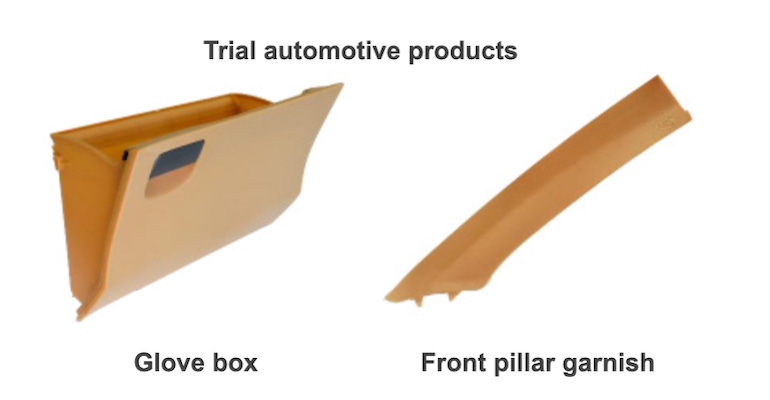Cellulose Nanofiber–Reinforced PP Homes in on Auto Exteriors, Interiors
Japanese Tier 1 Toyoda Gosei targets CO2 reductions over a product’s lifecycle by using biomaterials.
April 19, 2022

Japanese auto parts maker Toyoda Gosei has developed a cellulose nanofiber (CNF)–reinforced polypropylene (PP) compound with the aim of reducing CO2 over the lifecycle of automotive components, from raw material procurement and production to recycling and disposal. The work is part of the Japanese Ministry of the Environment’s Nano Cellulose Promotion project, which promotes efforts for the early social implementation of CNF-reinforced plastics, which are the basis of various products, with the aim of reducing CO2.
The newly developed CNF-reinforced plastic combines 20% CNF in a general purpose plastic used in automobile interior and exterior components. For practical applications, reduced impact resistance from the inclusion of CNF was initially an issue. Toyoda Gosei overcame this with its material mix design and kneading expertise to raise impact resistance to a level suitable for automotive components. The company will continue to lower costs in cooperation with CNF material manufacturers.
In moving toward decarbonization and a circular economy, Toyoda Gosei is developing materials that raise the environmental performance of its products by leveraging the following features of CNF:
CNF has one-fifth the weight and five times the strength of steel. When used as a reinforcing material in plastic or rubber, the product can be made thinner and foam molding becomes easier. This reduces weight and contributes to lower CO2 emissions when the vehicle is being driven.
When the material is reused after vehicles are scrapped, little strength is lost from heating and melting, making recycling of automotive components possible.
The material does not increase the total amount of CO2. Even when CNF is incinerated, the only CO2 emitted is that which was absorbed by the plant during its growth.
Japan is somewhat of a hotbed for development of cellulose-reinforced composites as well as the fibers themselves. Recently, Polyplastics introduced a grade of Plastron LFT long-fiber PP resin reinforced with specially formulated regenerated cellulose fibers. Compatriot Unitika, meanwhile, debuted last year a CNF-reinforced polyamide material for applications in automobile parts, home appliances, and outdoor goods.
About the Author(s)
You May Also Like




